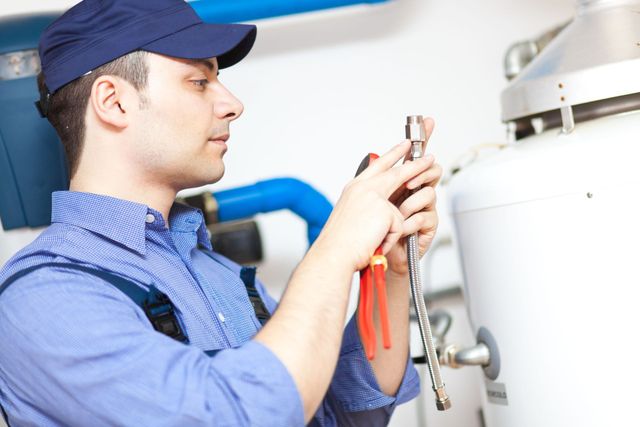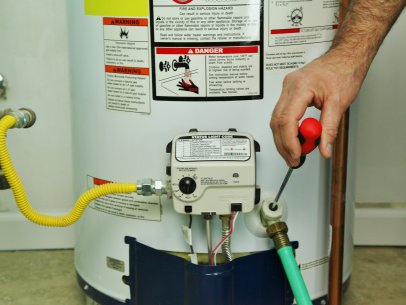Do you find yourself in search of information involving Tips For Maintaining Your Hot Water Heater?

Warm water is necessary for day-to-day comfort, whether it's for a revitalizing shower or washing meals. To guarantee your warm water system runs efficiently and lasts longer, normal maintenance is key. This article gives practical tips and understandings on how to maintain your home's warm water system to avoid interruptions and pricey repairs.
Introduction
Preserving your home's hot water system may appear overwhelming, however with a few straightforward steps, you can guarantee it runs efficiently for years ahead. This overview covers everything from recognizing your warm water system to do it yourself maintenance suggestions and recognizing when to contact specialist aid.
Relevance of Maintaining Your Hot Water System
Routine upkeep not only prolongs the life-span of your warm water system yet also ensures it operates successfully. Neglecting maintenance can result in lowered efficiency, higher energy expenses, and also early failure of the system.
Signs Your Warm Water System Demands Maintenance
Recognizing when your hot water system requires attention can stop significant issues. Look out for indications such as irregular water temperature, odd sounds from the heater, or corroded water.
Recognizing Your Warm Water System
Before diving right into maintenance tasks, it's valuable to recognize the basic elements of your hot water system. Normally, this consists of the water heater itself, pipelines, anode rods, and temperature controls.
Regular Monthly Maintenance Tasks
Routine monthly checks can assist capture small issues before they intensify.
Purging the Hot Water Heater
Purging your hot water heater removes sediment buildup, enhancing efficiency and prolonging its life.
Monitoring and Replacing Anode Rods
Anode poles protect against corrosion inside the storage tank. Evaluating and replacing them when worn out is essential.
Evaluating and Adjusting Temperature Settings
Changing the temperature setups guarantees ideal efficiency and safety and security.
DIY Tips for Maintenance
You can perform several maintenance tasks on your own to maintain your warm water system in top problem.
Looking for Leaks
Routinely check pipes and connections for leakages, as these can bring about water damage and higher bills.
Examining Pressure Alleviation Valves
Testing the pressure relief valve guarantees it works properly and prevents extreme pressure build-up.
Shielding Pipelines
Shielding warm water pipes decreases warm loss and can conserve energy.
When to Call a Specialist
While do it yourself upkeep is valuable, some concerns require professional expertise.
Complicated Concerns Requiring Specialist Help
Examples consist of major leakages, electrical issues, or if your water heater is regularly underperforming.
Routine Specialist Maintenance Advantages
Specialist maintenance can include complete evaluations, tune-ups, and guaranteeing compliance with security standards.
Final thought
Regular maintenance of your home's warm water system is crucial for performance, long life, and cost financial savings. By following these pointers and knowing when to look for expert assistance, you can guarantee a trusted supply of warm water without unforeseen disruptions.
Water Heater Maintenance: The Basics
Maintaining your water heater will ensure it operates efficiently and has a longer lifespan. Neglecting regular maintenance can lead to costly repairs and an even bigger chunk of your savings if you have to replace it sooner than necessary. But there’s good news: Most water heater maintenance tasks are relatively simple and easy for homeowners with basic DIY skills.
Flush the Water Heater
Over time, sediment and minerals can build up in the tank, reducing its efficiency and potentially causing damage. To flush the tank, turn off the power or gas supply, attach a hose to the drain valve near the bottom and open the valve to drain the water until it runs clear. Ideally, flush the tank annually.
Replace the Anode Rod
The anode rod is a sacrificial metal rod that helps prevent corrosion inside the tank. Inspect and replace it every three to five years or per the manufacturer's recommendation. To replace the anode rod, turn off the power or gas supply, drain a few gallons of water from the tank, unscrew the old rod and replace it with a new one. If the anode rod is significantly corroded or covered in calcium buildup, it's a sign the water heater may need to be replaced soon.
Tune-Up
A yearly tune-up can help identify potential issues and ensure your water heater operates at peak efficiency. This typically involves checking the thermostat, burner assembly (for gas heaters) and any other components specified by the manufacturer. During a tune-up, the technician may also clean the burner and adjust the pilot light (for gas heaters) or examine the heating elements (for electric heaters).
How to Maintain Your Water Heater
- Insulate the tank. Insulating the tank can improve energy efficiency and reduce heat loss, saving you money on energy bills. You can purchase precut insulation blankets designed specifically for water heaters or use standard fiberglass insulation wrapped securely around the tank.
- Check the temperature. The recommended water temperature for most households is around 120 degrees Fahrenheit (49 degrees Celsius). Higher temperatures can increase energy costs and potentially cause scalding. Use a kitchen thermometer to check the temperature at the faucet nearest the water heater.
- Monitor water pressure. Excessive water pressure can strain the water heater and cause leaks or even tank failure. Install a pressure-reducing valve if necessary. The ideal water pressure range is between 60 and 70 PSI (pounds per square inch).
- Test the temperature and pressure (T&P) relief valve. The T&P relief valve is a safety feature that releases pressure if the tank gets too hot or the pressure builds up too high. Test it annually by lifting the lever and allowing a small amount of water to release. Replace the valve if it doesn't release water or reseal properly.
- Check for leaks. Regularly inspect the tank, pipes and fittings for leaks or corrosion. Deal with issues promptly to prevent further damage. Even a small leak can lead to significant water damage over time.
- Consider a tankless water heater. If your traditional tank-style water heater is nearing the end of its lifespan ( typically 10 years), consider replacing it with a tankless water heater. These units heat water on demand, reducing standby energy losses and potentially saving you money on your energy bills.
- Schedule professional maintenance. While homeowners can perform many water heater maintenance tasks, it's still a good idea to schedule professional maintenance every few years. A plumber or HVAC technician can thoroughly inspect the unit, identify potential issues and ensure it operates safely and efficiently.
https://www.homeserve.com/en-us/blog/home-improvement/hot-water-heater-maintanence/

Do you appreciate reading about Water Heater Maintenance Tips You Can't Afford to Forget? Give a comment below. We'd be pleased to hear your views about this write up. We hope that you visit us again in the near future. Remember to set aside a second to distribute this page if you enjoyed reading it. Thanks for taking the time to read it.
Article
Comments on “Useful Techniques for Maintaining Your Home's Hot Water SystemProfessional Tips for Maintaining Your Home's Hot Water SystemEasy Ways to Care for Your Home's Hot Water System Effectively”